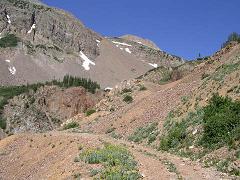
where one exits the road
in favor of a steep dirt path.
(photo courtesy of Layne Bracy).

|
|
The switchback at 11,000-11,100 feet where one exits the road in favor of a steep dirt path. (photo courtesy of Layne Bracy). |
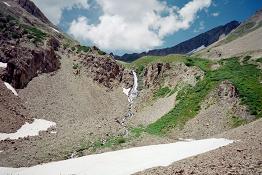
|
|
The waterfall at 11,500 feet. |
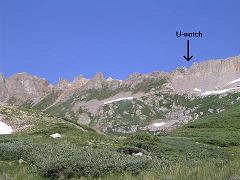
|
|
The Moss-Babcock ridge with recommended U-notch indicated. (photo courtesy of Layne Bracy). |
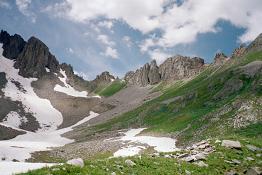
|
|
View west from 12,000 feet in upper Tomahawk Basin. |
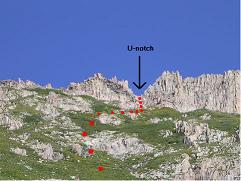
|
|
Close-up view of the U-notch and the gully beneath. (photo courtesy of Layne Bracy). |
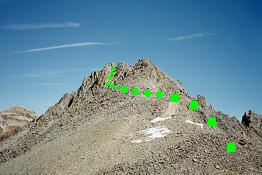
|
|
Lavender Peak from near the Lavender-Moss saddle 450 feet below. |
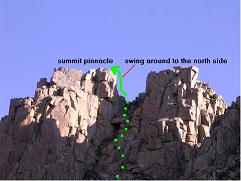
|
|
The leftmost pinnacle is highest. Climb the Class 3+ chute as indicated. (photo courtesy of Layne Bracy). |